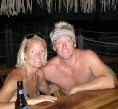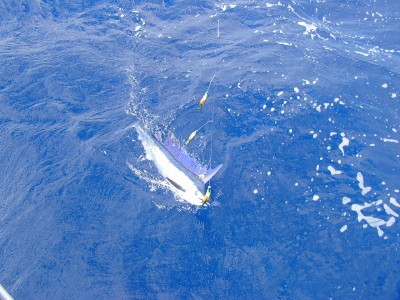
Cisnecito Around the World

Who: Julie and Chris Mays
Port: Newport, RI
Updates
Favorites
- Ashby's Boatyard - Opua, New Zealand
- Bali Hai, Moorea
- Freefall - Axel and Emma
- Gypsy Soul - Ben
- Hacienda Merida, Nicaragua
- Indigo Bay, Mozambique
- La Familia - Teresa and Yngve
- Land and Sea Marina, Costa Rica
- My Cousin Andrew's Blog
- Northern Star - Anne and Mogens
- Opua Marina, New Zealand
- Out of Bounds (Cisnecito�s first trip around)
- Pamina - Connor & Henri
- Peake Boat Yard, Trinidad
- Performance Yacht
- Petrel - Marit and Frode
- Quetzal Trekkers, Nicaragua
- Royal Cape Town Yacht Club, South Africa
- Semonkong Lodge Lestho
- Zululand Yacht Club, Richard's Bay, South Africa
02 February 2008 | Newport Beach, California
29 January 2008 | Newport Beach, CA
27 January 2008 | Balboa Yacht Club, California
25 January 2008 | San Diego, California
23 January 2008 | Mission Bay, California
20 January 2008 | Public Docks, San Diego
18 January 2008 | Shelter Island, San Diego
18 January 2008 | San Diego, California
17 January 2008 | United States/Mexico Border
17 January 2008 | Ensenada, Mexico
17 January 2008 | Ensenada Mexico
17 January 2008 | Ensenada, Mexico
16 January 2008 | Ensenada, Mexico
16 January 2008 | Ensenada, Mexico
14 January 2008 | Sacramento Reef, Baja California
14 January 2008 | Islas San Benitos
12 January 2008 | Islas San Benitos
12 January 2008 | Islas San Benitos
12 January 2008 | 60 Miles West of Turtle Bay
10 January 2008 | 130 Miles South of Cedros Island
Better Trolling Setup
25 June 2006 | Cairns, Australia
Chris

Above is a picture of one of the several short-billed spear fish we caught last year while cruising the South Pacific. We released this one unharmed although subsequently we have been told that they are very good eating.
Today I think I increase our odds for fishing on our cruising boat or at least as much as I have been able to glean from my two most trusted resources, "The Cruiser's Guide to Fishing" by Scott and Wendy Bannerot and "The Offshore Cruiser's Encyclopedia" by Steve and Linda Dashew, plus a half a dozen websites on the subject.
Consistent with my resources and with most cruisers, we fish for food not sport. I am sure a sport fishing enthusiasts will probably find our tackle selection overkill and perhaps not sporting. Although I would challenge any sport fisherman to land a good size fish from a sailboat while sailing in stiff breeze. There is no backing down on a fish, with a pair of massive diesels, to compensate for light tackle onboard a sailboat.
Actually with that last statement lies most of the challenge. How do you get an attractive presentation for the fish while maintaining enough strength in the tackle for enough hook ups to keep you eating fish. So far we have been on the lighter end of the spectrum and frankly have lost more fish and lures then we would like but do consistently get hook ups when the surface bite is good.
Well today I rigged both of our Penn Senator 4/0s with 80 lbs monofilament. This is still less poundage than my resources recommend but frankly it is a significant step up from the 50 lbs we used to use. In my limited experience the line strength is only part of the game. The hooked fish's tissue and bone strength plus the actual position of the hook in this tissue and bone is also important as well as the reels spool capacity and your ability to reduce speed for a given sail plan all need to be considered.
After a hook up we leave the rod in the rod in its holder until we get speed reduced as much as possible. Sometimes I adjust the drag on the reel prior to getting boat speed under control in order to prevent getting spooled (running out of line on the reel). However, this is risky because sometimes I manage to either break the tackle or rip the hook out of the fishes mouth. On my Penn reels the only effective way to guage the drag is to look at the rod bend, although this technique is frankly is subjective and dependent on my own excitement in the situation.
Today I think I increase our odds for fishing on our cruising boat or at least as much as I have been able to glean from my two most trusted resources, "The Cruiser's Guide to Fishing" by Scott and Wendy Bannerot and "The Offshore Cruiser's Encyclopedia" by Steve and Linda Dashew, plus a half a dozen websites on the subject.
Consistent with my resources and with most cruisers, we fish for food not sport. I am sure a sport fishing enthusiasts will probably find our tackle selection overkill and perhaps not sporting. Although I would challenge any sport fisherman to land a good size fish from a sailboat while sailing in stiff breeze. There is no backing down on a fish, with a pair of massive diesels, to compensate for light tackle onboard a sailboat.
Actually with that last statement lies most of the challenge. How do you get an attractive presentation for the fish while maintaining enough strength in the tackle for enough hook ups to keep you eating fish. So far we have been on the lighter end of the spectrum and frankly have lost more fish and lures then we would like but do consistently get hook ups when the surface bite is good.
Well today I rigged both of our Penn Senator 4/0s with 80 lbs monofilament. This is still less poundage than my resources recommend but frankly it is a significant step up from the 50 lbs we used to use. In my limited experience the line strength is only part of the game. The hooked fish's tissue and bone strength plus the actual position of the hook in this tissue and bone is also important as well as the reels spool capacity and your ability to reduce speed for a given sail plan all need to be considered.
After a hook up we leave the rod in the rod in its holder until we get speed reduced as much as possible. Sometimes I adjust the drag on the reel prior to getting boat speed under control in order to prevent getting spooled (running out of line on the reel). However, this is risky because sometimes I manage to either break the tackle or rip the hook out of the fishes mouth. On my Penn reels the only effective way to guage the drag is to look at the rod bend, although this technique is frankly is subjective and dependent on my own excitement in the situation.
Comments
| Vessel Name: | Cisnecito |
| Vessel Make/Model: | Swan 46 MkII |
| Hailing Port: | Newport, RI |
| Crew: | Julie and Chris Mays |
| Extra: | After three years of freezing in New York, we decided to give up our corporate careers to set sail on the opportunity of a lifetime... |
| Home Page: | http://www.cisnecito.com/ |
Gallery not available

Who: Julie and Chris Mays
Port: Newport, RI
Updates
Favorites
- Ashby's Boatyard - Opua, New Zealand
- Bali Hai, Moorea
- Freefall - Axel and Emma
- Gypsy Soul - Ben
- Hacienda Merida, Nicaragua
- Indigo Bay, Mozambique
- La Familia - Teresa and Yngve
- Land and Sea Marina, Costa Rica
- My Cousin Andrew's Blog
- Northern Star - Anne and Mogens
- Opua Marina, New Zealand
- Out of Bounds (Cisnecito�s first trip around)
- Pamina - Connor & Henri
- Peake Boat Yard, Trinidad
- Performance Yacht
- Petrel - Marit and Frode
- Quetzal Trekkers, Nicaragua
- Royal Cape Town Yacht Club, South Africa
- Semonkong Lodge Lestho
- Zululand Yacht Club, Richard's Bay, South Africa